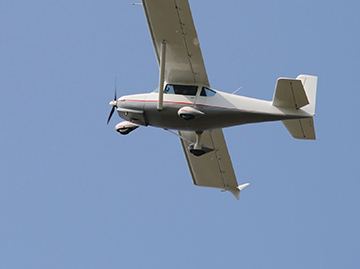- This case study from the Avoidable Accidents Series - Managing partial power loss after take-off in single-engine aircraft shows why it’s vital for pilots to take positive action and maintain control in response to emergencies.
- Have you experienced a partial power loss after take-off?
- Check out the video below.

Partial engine power loss is more complex and more frequent than a complete engine power loss.
Partial engine power loss can range from providing very little power to almost full power, with varying levels of reliability of the remaining engine power. When faced with a partial power loss, pilots should not try to diagnose the engine problems at the expense of maintaining aircraft control.
Loss of control — Case Study
The pilot of an amateur-built Lancair 360 aircraft was conducting circuits at Bankstown Airport in April 2006. It was the aircraft’s first flight since being repaired after a landing accident. Following an overflight of the runway and a touch-and-go, the pilot conducted another touch-and-go and, shortly after lift-off at an altitude estimated by witnesses to be between 100 feet and 400 feet, the engine was heard to malfunction. Almost immediately, while still not above 500 feet, the aircraft rolled into a steep right turn.
Engine power was heard to return, but sounded intermittent. After turning approximately 90 degrees, the aircraft rolled out of the turn momentarily to about wings level, before the turn steepened again to the right. The aircraft was observed to roll further to the right and descend steeply. The aircraft impacted a taxiway. Tragically, the pilot died, and the aircraft destroyed.
The ATSB investigation found that the engine power loss was probably due to interruptions of fuel flow to the engine. The aircraft stalled at a height insufficient to allow the pilot to recover.
Do you have a plan for partial power loss after take-off? The following initial actions should be considered when responding to a partial loss in power.
- Lower the nose to maintain the glide speed of the aircraft.
- Conduct the basic initial engine trouble checks as per an engine failure in accordance with manufacturer’s advice. However, this should be done only if there is sufficient time.
- Maintain glide speed and assess whether the aircraft is maintaining, gaining or losing height to gauge current aircraft performance. This will help to inform the options available for landing.
- Fly the aircraft to make a landing, given the aircraft’s height and performance, and the pre-planned routes for the scenario. If turning is conducted, keep in mind an increased bank angle will increase the stall speed of the aircraft. Keeping the aircraft in balance will minimise rate of descent in any turn.
- Re-assess landing options throughout any manoeuvres. Be decisive but be prepared to modify the plan if required.
- Land the aircraft.
- Have a minimum height planned to roll wings level. It is suggested in CASA documentation that turns should not be attempted below 200 feet AGL. However, this will depend on the aircraft’s roll rate, the airspeed and personal experience.
- Maintain glide speed up to the point of flare; this will ensure that when flaring there is enough energy to arrest the vertical descent rate.
As is the case with a total power loss after take-off, during a partial power loss after take-off, diagnoses of the cause of the engine problem should not be attempted at the expense of maintaining control of the aircraft.
Key safety message
Most fatal and serious injury accidents resulting from partial power loss after take-off are avoidable. You can prevent or significantly reduce the risk of harm following a partial or complete engine power loss after take-off by using these strategies:
- Pre-flight decision making and planning for emergencies and abnormal situations for the particular aerodrome.
- Conducting a thorough pre-flight and engine ground run to reduce the risk of a partial power loss occurring.
- Taking positive action and maintaining aircraft control either when turning back to the aerodrome or conducting a forced landing until on the ground.
Do you have a plan for partial power loss after take-off?
Have you ever experienced a partial power loss after take-off? Share your experiences on Facebook.
Read more about: Managing partial power loss after take-off in single-engine aircraft
Managing partial power loss after take-off in single-engine aircraft


